Barter as currency

Kira Zabe
September 21, 2022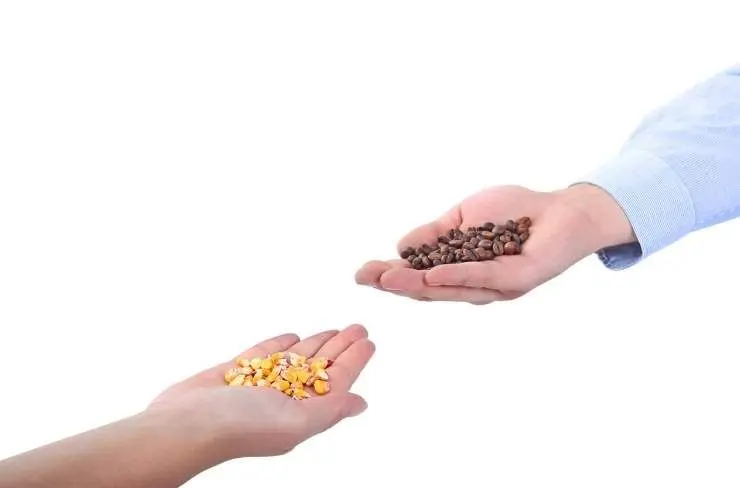
The pandemic has shown that supply shortages can lead to a scarcity economy. As a result, many items are not available on the official market. Especially during the 1920/1930s or after World War II, there was such an extreme time. Black markets quickly emerged to provide access to essential items that were not officially available. Money played a secondary role in being able to pay for the needed goods. Instead, bartering was widely practiced in such times.
In this post, we would like to list for you which products are highly sought after and thus appear to be useful.
Alcohol:
It is consumed for pleasure but also often enjoyed on joyful occasions. Spirits with a long shelf life without loss of quality include: grain alcohol, vodka, or whiskey. Variations mixed from these also keep well.
Cigarettes:
Required by smokers on a daily basis. Due to their calming effect, many do not want to do without them, which is why they are in high demand during shortages. If you stock up on cigarettes bought at a low price for trading, it makes sense to vacuum-pack them. This way, they do not lose quality through drying out and retain their value.
Coffee:
Many people enjoy drinking it and it's hard to imagine many households without it. Since it cannot be grown here, it is a product that can only be brought into our country through transportation. Rising energy costs are also driving up its price. If you want to stock up on coffee, opt for whole beans. They retain their flavor well and allow everyone to choose their own grind size. Instant coffee is also a good alternative for storage.
These are the Top 3 items that the fewest people would want to give up and are certainly the most interesting as a stock for trading.
We list more tips for you here:
Medications and Dressing Materials:
If you rely on certain medications, you should not consider them for trading. Because in the worst case, it could be detrimental to you if they were no longer available. It's good to stock up on items that are often needed, such as ibuprofen or anti-diarrheal drugs. They are very suitable for trading. Band-aids and dressing materials can also be very well stored. Who isn't familiar with the situation? A small wound here, an injury there, and suddenly you're out of band-aids. There's potential here to easily forget to restock.
Hygiene products:
Due to our high standards of hygiene, many diseases are no longer prevalent in our region. In countries where standards are not as high, illnesses such as cholera or typhoid are common. It is wise to keep an eye out for discount promotions or offers that make purchasing in bulk affordable. Bleach can be used to make disinfectant, which is always useful to have around the house.
Energy:
Everyone needs energy in some form or another. Gasoline/diesel, gas, batteries, or power stations can serve as useful items for barter. This way, you can offer your power station to someone in exchange for charging their devices for a certain period of time. With gasoline/diesel or gas, safety should be a priority. Consider whether it really makes sense to stockpile, for example, 50 cans of gas.
Vegetable seeds and fertilizer:
The current inflation shows that self-sufficiency is not such a bad idea. Everyone knows about allotment gardens. This culture emerged after World War II out of the necessity to be self-sufficient. Don't have the opportunity to use an allotment garden? Start on a small scale and plant in flower pots and boxes. This also saves you money. In times when many people turn to plant seeds and fertilizer, increased demand drives up prices and can lead to shortages in the market.
If you want to make a natural fertilizer yourself, nettle manure is very suitable. Here is a good guide*.
Items of the ordinary household:
Under certain circumstances, cable ties, duct tape, screws, wall plugs, etc. can be helpful. Who isn't familiar with the situation where you want to assemble a cabinet and maybe a wooden dowel or glue is missing. Thus, with a well-stocked supply of household items, you can also support others.
Knowledge, skills, and information:
Do you have manual dexterity or practice a craft? That's very good and offers tremendous bartering potential. Your skills add value when others are at a loss. Whether you're a hairdresser, mechanic, or chicken keeper, knowledge and skills are always in demand.
To be able to trade, do you want to expand your inventory? That's good. To help you keep track, our app supports you digitally. Why not try it out!
Another useful resource for you might be our Emergency Backpack Guide. Take a look at it right away.
In the linked video from BugOutSurvival NRS* a deeper dive is taken into today's topic. If you're interested, feel free to watch it here.
*unpaid advertising
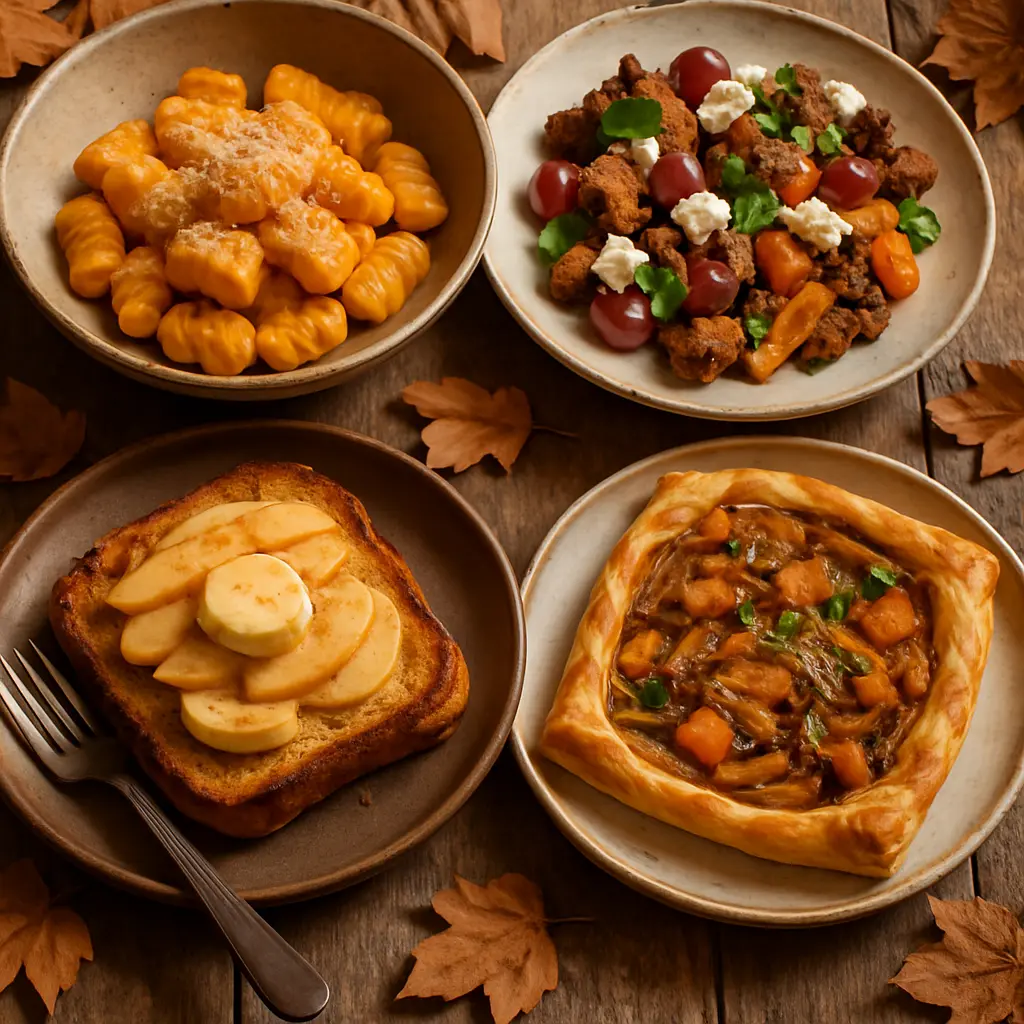
🍂 Cozy Autumn Leftover Cooking – Comfort dishes made from what's available
When the rain taps on the window and the tea cup becomes a permanent guest, the most beautiful kitchen time of the year begins: autumn. And what could be a better match than stylish leftover cooking – dishes that are not only sustainable but also truly exciting.
Autumn leftover cooking means: use instead of waste, but with a touch of sophistication. Here are some more unusual ideas to turn leftovers into small culinary highlights.
🧀 1. Pumpkin Gnocchi from leftover roasted vegetables
Do you have some leftover roasted pumpkin or sweet potato from the day before? Perfect!
Mash the vegetables, mix them with some flour, salt, and grated Parmesan, shape them into small gnocchi, and briefly cook them in salted water until they float to the surface. Then toss them in sage butter and top with chopped walnuts.
→ Tastes like Italy, looks like fine dining – and it's all made from leftovers!
🥖 2. Rustic bread salad with grapes and goat cheese
Tear stale bread into pieces, toast in olive oil until golden brown.
Add a few grapes (wrinkled ones are especially sweet), arugula or lamb's lettuce, crumbled goat cheese, and roasted hazelnuts. Mix with a dressing of balsamic vinegar, honey, and mustard.
→ A fall twist on the classic Panzanella – sweet, salty, crunchy, perfect!
🧅 3. French onion tart with leftover vegetables and puff pastry
Got some leftover puff pastry in the fridge? Make a tart out of it!
Caramelize onions in butter, add some leftover vegetables (e.g., leeks, mushrooms, or spinach). Spread on the pastry, top with a dollop of sour cream or cream cheese, and bake until golden brown.
→ Wonderfully aromatic, especially with thyme or rosemary.
🍎 4. Apple Sourdough French Toast with Vanilla Rum Butter
A piece of stale sourdough bread is soaked in a mixture of milk, egg, vanilla, and a dash of rum, fried in a pan, and served with fried apple slices and a rum butter.
→ Luxurious, yet made entirely from leftovers – perfect for a Sunday breakfast in pajamas.
🥬 5. Risotto made from leftover vegetables with lemon and herb oil
Chop the vegetable scraps finely and cook with a handful of rice into a creamy risotto.
A dash of lemon juice and some leftover herbs (parsley, basil, arugula) blended with oil make a fresh herb oil as a topping.
→ The acidity of the lemon beautifully enhances the earthy autumnal notes.
☕️ Bonus Tip: Using leftovers in a dessert glass
A few spoons of leftover compote?
Some leftover cake or cookies?
Layer it all with yogurt or mascarpone in a glass – and you have an autumnal "trifle" that looks like it came straight from a café in Copenhagen.
🍁 Conclusion
Autumnal leftover cooking is not a last resort, but a playground for creativity. When you look at ingredients with open eyes – not as leftovers, but as opportunities – small, exquisite dishes full of soul and flavor emerge.
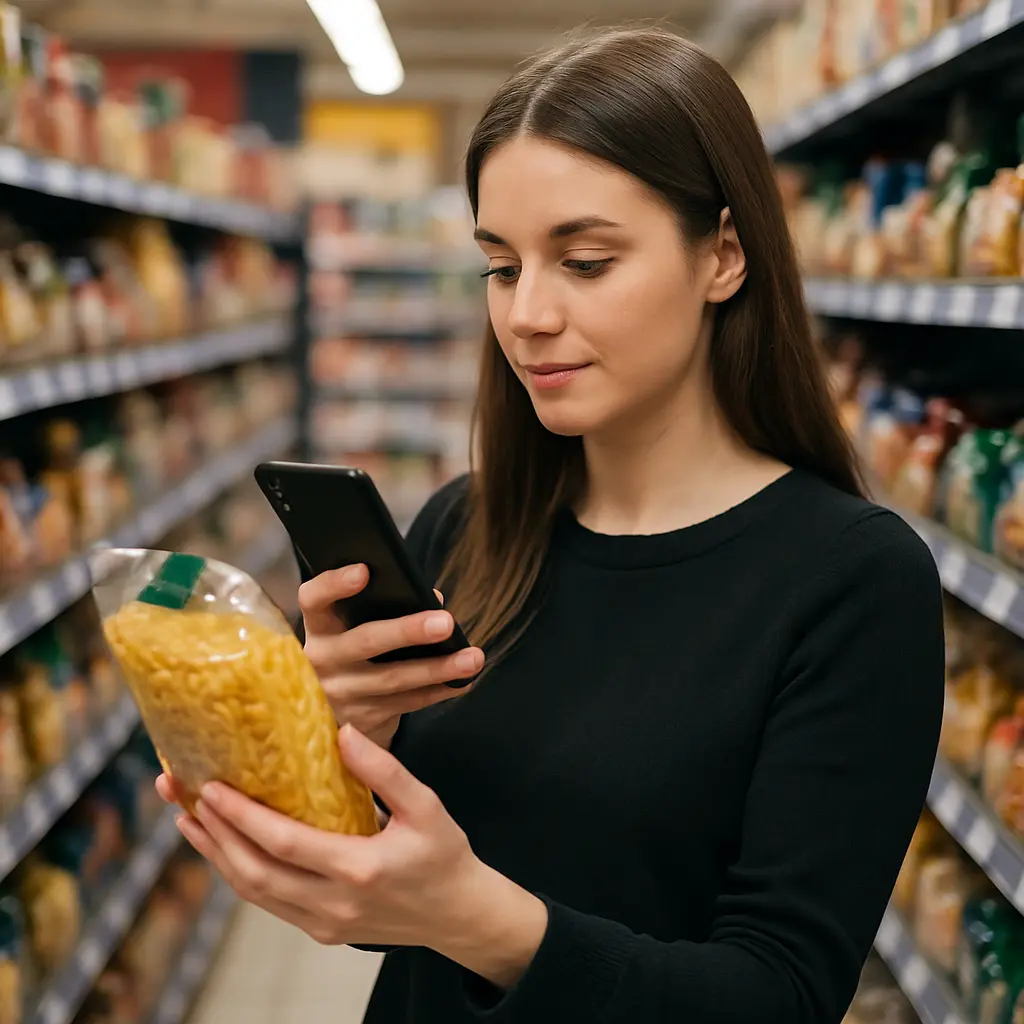
Why we never stop refining Smantry ✨
At Smantry, we don't believe in 'finished'.
An app that is meant to accompany people in their daily lives is never complete – it grows, changes, and evolves. Just like the people who use it. 💛
We regularly pay attention to every detail:
How does a click feel? Is the path to a function clear enough? Does the idea behind a new view come across intuitively?
Sometimes it's just tiny things that make the difference – a better-placed button, a simplified overview, or a sentence that suddenly becomes clearer.
What drives us is the idea that Smantry should feel easy, familiar, and meaningful.
We want you to open the app and feel: "Ah, this is exactly how it should work."
Of course, not everything always goes perfectly. But that's exactly the point: We take the time to listen, to observe, to reconsider. Every piece of feedback, every use case, every new idea helps us to understand a little better what really matters.
Smantry is not a rigid product for us – it's a living process. A collaborative project that grows step by step.
And every update, every small improvement is a sign that we are on the right track:
A path to an app that doesn't feel like technology, but like support.
Towards a daily life that becomes simpler. Towards clarity, structure – and maybe even a bit of ease. 🌿
We're staying on it.
Because we are convinced that good things take time – and that it's worth creating them with heart.
Your
Smantry-Team
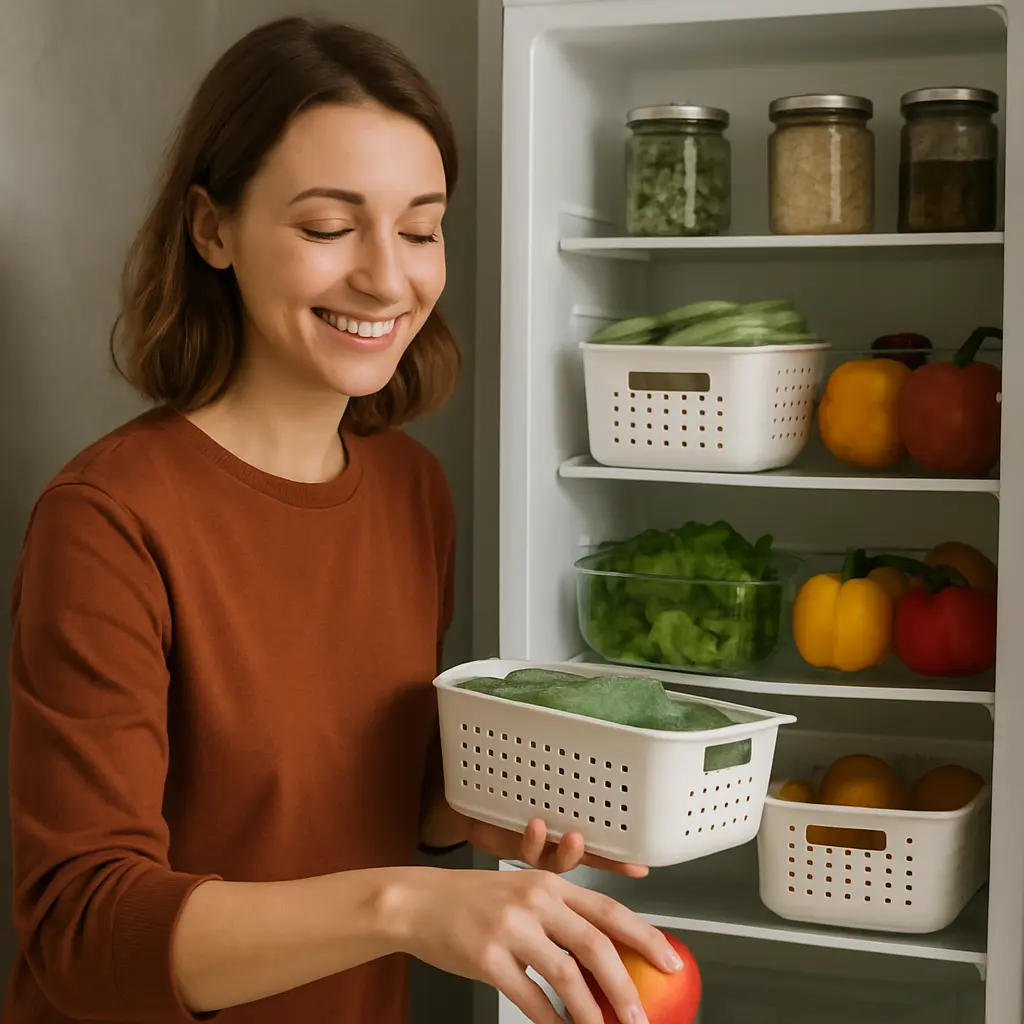
🌱 Staying on track made easy: How to stay motivated to create order and avoid food waste
We all know it: Initially, the motivation is high! You finally want to get your kitchen organized, keep an eye on your supplies, and shop more consciously. But after a few weeks, everyday life creeps back in – and the good resolutions start to falter.
With Smantry we want to support you not only in getting started, but also in sticking with it in the long term. 💪✨
1. Be aware of why you are doing this
Order and sustainability are not short-term trends – they grant you freedom, time, and a good feeling. If you know why you want to keep your supplies in check or throw away less food, it becomes much easier to stay consistent.
👉 Tip: Write down your 'why' in the app note or as a reminder.
2. Set small, achievable goals
Nobody becomes an organizing pro overnight. Start small:
- Today I'm just organizing the spice rack.
- Check the fridge this week.
- On your next shopping trip, purposefully buy only what you really need.
Small steps lead to success – and success motivates!
3. Make it easy for yourself – with smart helpers
Smantry automatically reminds you of expiring products, helps you keep track of your inventory, and assists you with shopping. This way, you have to think less and can enjoy more.
👉 The less effort required, the easier it is to stick with it!
4. Celebrate your progress 🎉
Creating order or avoiding waste is a process, not a sprint. Regularly review what you have already accomplished – you may already see that you need to throw away less or that your supply is finally manageable. That's great!
5. Make it part of your routine
Schedule fixed 'Smantry moments': for example, briefly check the inventory on Sundays or update the shopping list before going shopping. Routines provide structure and make sustainable actions a matter of course.
💚 Conclusion:
Motivation is not a perpetual flame – but with the right tools and habits, you can reignite it time and again.
With Smantry, you have a smart companion by your side that helps you stay organized, consume more consciously, and incidentally do something good for yourself and the environment.
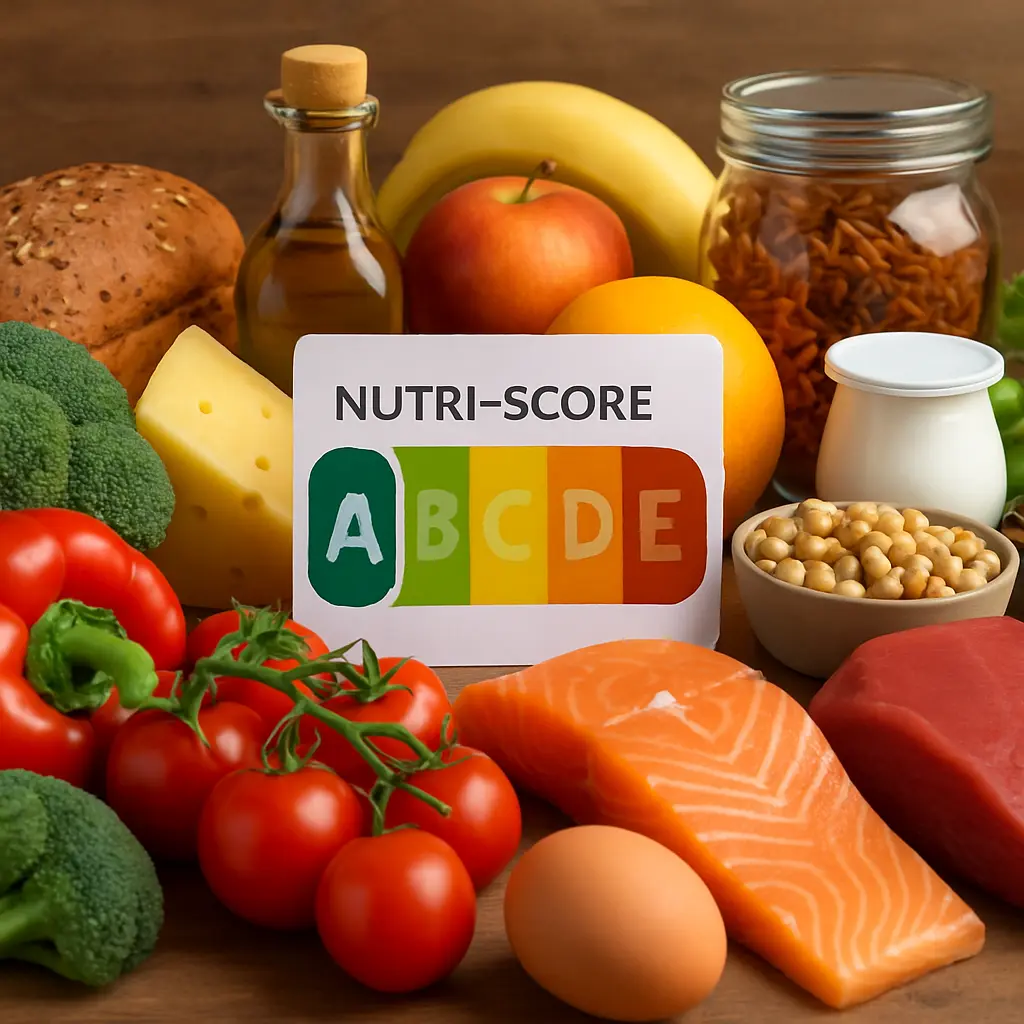
More clarity when shopping: How Open Food Facts and the Smantry app make nutrition transparent
Many foods look healthy at first glance – but what's really inside them? Are the nutritional values balanced? How processed is a product? And what impact does it have on our environment?
This is exactly where the Smantry-App comes in: It uses the globally open database Open Food Facts, to give you immediate clarity when scanning your items. But what's actually behind the colorful labels like Nutri-Score, NOVA or Eco-Score, that you encounter in the app?
Let's take a closer look at the background.
Open Food Facts: From the Idea to a Global Database
The journey began in 2012 with the founding of Open Food Facts – a non-profit organization that collects, analyzes, and makes food information freely accessible worldwide. The goal from the beginning was to provide consumers with scientifically substantiated information.
What started as a small project has now become a global platform with millions of products. And it is precisely this data that the Smantry-App uses to give you a clear overview directly on your smartphone.
An overview of the most important scores
1. Nutri-Score – how healthy is my product?
Since 2016, the Nutri-Score has been legally established in France – and it has quickly spread throughout Europe.
- A (green) means: very balanced.
- E (red) means: unbalanced, enjoy in moderation.
The rating is based on calories, sugar, salt, saturated fats – but also on positive factors such as fiber, protein, and the proportion of vegetables.
👉 So in the Smantry app, you can see at a glance whether a food item fits into your everyday life – or perhaps should be on the table less often.
2. NOVA-Score – how processed is it?
Not only the ingredients, but also the degree of processing plays a significant role for health. This is exactly what the NOVA-Score (integrated into Open Food Facts since 2018) shows you:
- 1 = unprocessed or minimally processed (e.g., fresh fruit, plain yogurt)
- 2 = ingredients such as vegetable oils, sugar, flour
- 3 = processed foods (e.g., bread, cheese, canned goods)
- 4 = highly processed products ("Ultra-Processed Food"), often with additives, flavors, and industrial processes
👉 With the Smantry app, you can instantly tell if a product is still 'close to nature' – or if it falls into the category of being highly processed.
3. Eco-Score (soon to be Green-Score) – how sustainable is my shopping?
Since 2019, Open Food Facts also includes an environmental assessment: the Eco-Score. It takes into account, among other things:
- CO₂ emissions from production and transportation,
- Packaging and recyclability,
- Origin and seasonal factors.
The rating is – similar to the Nutri-Score – from A (very eco-friendly) to E (less sustainable).
By 2025, this will become the Green-Score, which will take into account even more detailed data and thus provide you with even better guidance for sustainable consumption.
👉 For you in the Smantry app, this means: You can see not only whether a food is healthy for you, but also whether it is good for our planet.
What this means for you as a Smantry user
Currently, you can scan your products in the Smantry-App and view many details. The scores themselves are not yet integrated – but the integration is planned.
This means: Soon you will be able to see not only the nutritional values of a product but also how healthy, processed, or sustainable it is – all directly in your app.
Conclusion: Your Smart Nutrition Compass
The colorful labels are much more than pretty symbols. They are your quick compass in everyday life – whether you want to shop with health consciousness, reduce highly processed products, or pay attention to the environment.
With the Smantry-App you already have strong support for more transparency while shopping. And with the planned integration of the scores, it will become even more valuable – your smart nutritional compass for the future.
